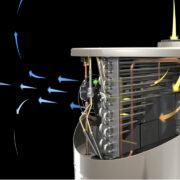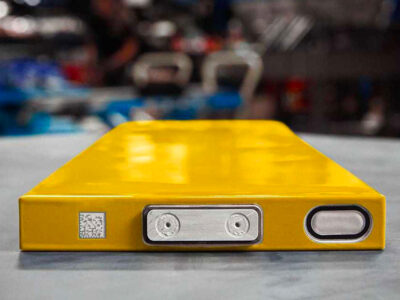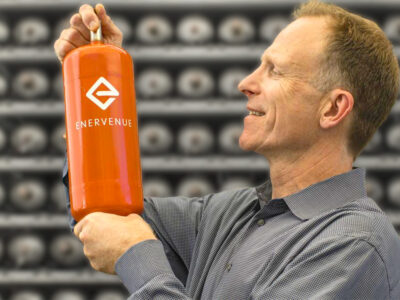Adding solar panels to your home is a bright idea, but according to one report from 2020 only about 6% of installed residential solar systems included battery storage.1 2 That’s a bit of a power outage in the world of renewable energy. But with a home battery, you’ll be able to store energy like a squirrel stores nuts for the winter. Not to mention, you’ll be the coolest kid on the block with your Virtual Power Plant system. So, if you want to be the sunshine in your neighborhood, you should consider a home battery, but which one? Let’s take a look at the top 5 battery options on the market … and a couple of bonus alternatives to keep an eye on .. even for renters.
I hope I don’t sound like a broken record when I bring this up, but I’m building a new, energy efficient home with the goal of achieving net zero energy, meaning I’m producing as much electricity over the course of the year as I’m using. A key component to that is energy storage. As I’ve been planning out what to do for my house, I’ve compiled what I think are the top 5 home battery options (with a couple bonus call outs at the end).
Without energy storage I’d be flooding the grid with my excess solar production in the middle of the day. That does get used by my neighbors and community, but it’s not when the energy is needed most, like in the evening and overnight. With a battery system more of the energy I generate stays within my home, it also offers self sufficiency in case of a grid outage (not uncommon during New England winters), and my battery can participate in the Connected Solutions Virtual Power Plant system here in my area. That helps the utility with electricity peak shaving during summer high demand events. Bottom line: I want my system to not only benefit my own home, but to also participate in helping with the resilience of the local grid and my community.
But two big questions usually come up around home batteries: what does it cost and how long will it last (or how good is it)? So let’s run through my top 5 list. These are not in any particular order, so don’t read into this as one winning over another.
1: Tesla Powerwall
Okay, so the first one is kind of the obvious one. It’s one of the most popular options out there and that’s the Tesla Powerwall. The newer Tesla Powerwall+ has some impressive specs. It’s an NMC battery chemistry, which is AC connected and has 13.5 kWh usable storage capacity. It has one of the best power outputs you can get with 7 kW continuous power output and 10 kW peak. A good example of why that’s important, if you’re running a 1,000 watt microwave, that’s 1kW you’re using as it’s running. The higher the kW capacity, the more things you can run at once. kWh is kW over time. So that 1kW microwave could run for 13.5 hours from a 13.5 kWh battery … which would give you a very rubbery piece of chicken. The Powerwall comes with a 10 year/70% capacity retention warranty. It’s obviously going to continue working well beyond that, but that gives you a general sense for longevity as we compare these batteries.
As for cost, all of these are pricey, but it costs $12,850 before installation. With installation the rough price comes in around $16,850 for the first one (it’s cheaper per battery for the additional batteries that you add). To get an apples to apples comparison with the other batteries, I’ve divided the total installed cost by the usable kWh storage, which means the Powerwall+ comes in at around $1,248/kWh. These prices are going to vary wildly depending on where you live.
2: FranklinWH
The next option is a newer competitor, and one that’s pretty comparable to the Powerwall for capabilities, but with one key distinction: it’s using a lithium iron phosphate (LFP) battery chemistry, which has some advantages. LFP batteries are better than NMC batteries in terms of safety, lifespan, and tolerance for extreme temperatures. LFP batteries are more stable, have a longer lifespan of up to 20 years, and are better suited for use in harsh environments. On the other hand, NMC batteries have higher energy density and are suited for high-power applications with limited space. That’s why they’re used in EVs. The choice between the two depends on the specific needs of the application, but for home use LFP is an excellent choice.
FranklinWH’s home battery system is AC connected and can store 13.6 kWh per battery module. It has 5kW continuous power with a peak of 10kW for 10 seconds, which makes it somewhat comparable to the Powerall. Much like a Powerwall, there’s an extra box called an aGate that is like the brain of the system and can manage up to 15 linked batteries. That means a maximum of 204 kWh per aGate setup … that’s insane overkill for the average house. Another benefit in favor of Franklin is the support for AC backup generators, so you can layer in a backup to your backup for areas that can sometimes have outages that last days. And having a generator plugged into a battery means not having to run the generator constantly, which reduces your fuel needs.
As for cost, you’d be looking at around $17,500 with installation, which does put this on the more expensive side of things. That works out to about $1,287/kWh for the first battery. Just like with the Powerwall, each additional battery you add is cheaper than the first. And here’s a benefit of the LFP battery chemistry, the warranty is a 12-year, 70% capacity with an aggregate throughput of 43 MWh.
3: SolarEdge
SolarEdge is one of the biggest players in the home solar market. Their Home Battery is an NMC chemistry that’s DC connected. It’s meant to be tightly integrated with their SolarEdge string inverter solar panel setups, so the DC electricity that your panels generate flows straight into the battery without any major conversion losses. That’s really the biggest sales pitch of going all in on the SolarEdge system, or any string inverter solar panel setup into a DC connected battery. If you’re pumping 5kW of solar generated electricity into the battery, 5kW is going in vs. something like 4.7kW for a system that’s converting from DC to AC and back to DC.
One battery gives you about 9.7kWh of usable storage, 5kW continuous output, and 7.5kW peak. You can stack up to three of these per inverter for a total of 29.1kWh of storage. The warranty falls right in line with the others at 10 years/70% capacity retention.
For costs you’re looking at around $13,000 installed, so that would be roughly $1,340/kWh for the first battery. But again, one big benefit here is the power capacity from the NMC chemistry, and you have the ability to integrate a fuel generator for additional backup protection.
4: LG ESS Home 8
LG Electronics has another option in the home battery market. Their newest offering is the ESS Home 8, which is an NMC battery chemistry and can be AC connected. Total usable capacity is 14.4kWh with 7.5kW continuous and 9kW peak output. Just like the others, the more batteries you add, the more usable storage and higher power output. You can max this out at 4 units for 57.6kWh of storage. For the warranty, it’s just like Tesla at 10 years/70% capacity.
I couldn’t find any costs, which included installation, but the base cost is $11,200. If we ballpark the installation cost around what a Powerwall costs, then we’d have to add about $4,000 to the price, which makes it roughly $15,200 installed. That’s about $1,055/kWh (if that estimate holds true).
5: Enphase IQ
This is where the other big player in the solar panel industry comes in, Enphase with their Enphase IQ battery system. Enphase is known for their solar panel microinverter setup, which is the complete opposite approach of SolarEdge’s string inverter and keeping things DC as long as possible. I won’t get into all the details here, but there are different advantages to both. One of the big ones for microinverters is redundancy, since there’s no single, central inverter to go down. The interesting thing about their battery is that it uses 12 of the same exact microinverters that are placed behind each solar panel on your roof. That means the battery itself benefits from inverter redundancy as well.
The Enphase IQ 10 battery is an AC connected LFP battery with 10.1 kWh of storage, and 3.84 kW continuous power with 5.7kW peak. As with all AC connected batteries, the more modules you add, that number goes up. Similar to all LFP batteries, you’re trading off the high continuous power output for longer cycle life and resilience, which is reflected in the warranty. Each battery comes with a 10 year warranty or 4,000 cycles, but you can purchase an extension for $1,000 per battery that increases that warranty to 15 years or 6,000 cycles.
All in, you’re looking at about $12,000 installed, which means about $1,188/kWh for the first battery. And just like SolarEdge and most of the others, with the exception of the Tesla Powerwall, you can connect a fuel generator backup.
Bonus
So like I said, these are my top 5 whole home options on the market right now, but there are two bonus items I want to call out. The first is for renters or people who don’t want to bother installing an entire whole home system. There are options starting to spring up for renters like the BlipOne, which gives you 2.2 kWh of storage that can help shift your energy costs if you have time of use rates. It’s still coming to market (the first batch haven’t been delivered yet), so we still need some time to see how that product shakes out.
There are a lot of other options from companies like Ecoflow, who has sponsored previous videos here (just for full disclosure), Bluetti, and others that make large portable battery packs that can give you 3kWh or more of storage. You can even plug solar into them directly to recharge during a blackout. Best part is that you can take it with you when you move to a new place.3
The last bonus item I want to call out is that there’s some exciting options coming to market that will last decades and should end up being price competitive with what’s already here. It’s still a little ways away, so I wouldn’t recommend waiting for it yet, but the company Forever Energy is bringing a residential flow battery to the market. If it turns out to be as promised, it should cost about the same as a single Tesla Powerwall, but provide 3 times the storage … and last for 30+ years. A single unit will provide about 10kW power with 40 kWh of storage. You’d only need one small refrigerator sized unit connected to your house and you’d be all set. I’m keeping my eye on that company because if it pans out, that’s going to be a killer option for homes.
















Comments